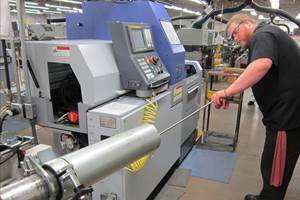Cure the Entry-Level Employee Blues
Improve your screening process to find entry-level candidates that meet your expectations.
What do restaurants, retailers, landscapers and manufacturers have in common? They all need entry-level workers. Where do companies typically have their largest area of turnover? Entry-level workers. What segment of the workforce has the highest unemployment rate? Entry level workers.
Since the entry-level worker is essential for the day-to-day operations for many employers, it is important for employers to understand with what and to whom they are dealing with in each segment. It’s relevant to identify that there are two levels of entry-level workers: college degreed and non-college degreed. Each group of entry-level workers has its own unique set of needs and challenges to gaining and maintaining satisfying, full-time employment.
On one end of the entry-level employment spectrum sits the GED holder or high school graduate. I have interacted with this employee for over 20 years as a recruiter. This employee group has many challenges, starting with annual incomes. The average high school degree holder in the U.S. makes less than $30,000 annually ($652 per week). The average non-high school degree holder earns $23,900 annually ($471 per week), according to the Bureau of Labor Statistics.
Often, these wages need to support dependent children. Those expenses don’t leave much cash for things such as reliable transportation, which often results in poor attendance or tardiness. Poor attendance is the No. 1 reason entry-level workers lose their jobs.
Now these unemployed people receive unemployment benefits, which are 60 percent of their take-home pay. Once they exhaust the benefit period, they can simply find another entry-level, low-skill job. There are plenty out there.
Sometimes, a reduction or interruption in income will lead people to make negative life choices to earn money, resulting in criminal records. According to dosomething.org, U.S. high school dropouts commit about 75 percent of all crimes. With more than 65 million people in the U.S. having a criminal record as of 2010, and 92 percent of employers running background checks, someone with a weak education now has a criminal record, further diminishing job options. It’s a vicious cycle of negative circumstances. When the facts of their life circumstances are understood by employers—essentially trying to employ the almost unemployable—it’s not much of a mystery why this category of employee hops from job to job.
The other entry-level workforce, typically in a white-collar job, is the recent college graduate. This millennial employee brings a different mindset to entry-level jobs. National media publications portray their view of work as the employees striving for work-life balance. Some blogs, written by these employees, promote concepts such as the six-hour work day and rapid promotions to hold their interest. I think the most relevant area for clashing between the entry-level worker and “the boss” revolves around expectations.
Recently, I saw an image posted on LinkedIn: 10 Things that Require Zero Talent. It struck me that the list encapsulates what employers are looking for in an entry-level employee, regardless of a degree status. The list includes being on time, work ethic, effort, positive body language, energy, good attitude, passion, being coachable, doing extra and being prepared.
In order for employers to screen entry-level candidates that meet their expectations, they need to improve their screening process. Here are some suggestions.
- Look for candidates who have a track record of achievement—in something
- Ask a ton of open-ended, probing questions
- Use screening tools such as the Employee Reliability Index to measure employee belief systems on attendance, and so on
- Talk about what the company can do for the candidate
Right now, employees need entry-level workers and vice versa. Instead of seeing the other party as a short-term fit, it benefits each group to see the other as a long-term opportunity.
Related Content
Manufacturing Skills Training: Virginia Martinez and Laiken Carrillo
Roles of Women in Manufacturing Series: A precision machining career starts with skills. Virginia and Laiken share their journey and how they help prepare the next generation.
Read More6 Tips for Training on a Swiss-Type Lathe
There are nuances to training a person to effectively operate a Swiss-type lathe. A shop I visited a while back offers some suggestions.
Read MoreEmerging Leader's Dedication to Education
Instilling confidence throughout a shop floor can do wonders for company morale while increasing productivity.
Read MoreStrengthening Manufacturing Workplaces Through Active Listening
A good strategy to weather the storms of manufacturing market upheavals and unpredictable factors is to commit to continuous, active employee listening.
Read MoreRead Next
5 Aspects of PMTS I Appreciate
The three-day edition of the 2025 Precision Machining Technology Show kicks off at the start of April. I’ll be there, and here are some reasons why.
Read MoreEmerging Leaders Nominations Now Open
Here’s your chance to highlight a young person in your manufacturing business who is on the path to be a future leader moving your company forward.
Read MoreDo You Have Single Points of Failure?
Plans need to be in place before a catastrophic event occurs.
Read More










.jpg;maxWidth=300;quality=90)











